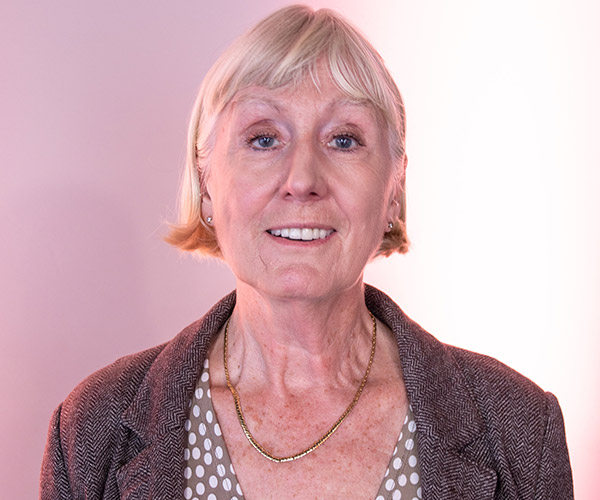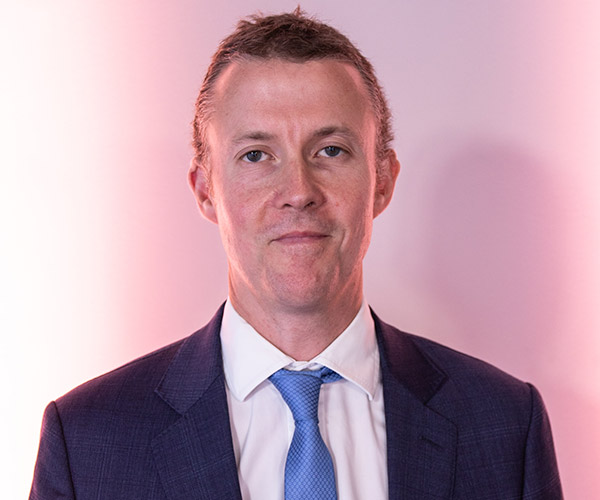
“If I want to buy healthcare, [I] buy a dedicated healthcare fund”
Hilary Coghill

“When we enter a period of volatility is not to panic, stick to your fundamental views”
Andrew Harradine
Healthcare isn’t about big pharma, it’s about innovation
Healthcare’s smaller more agile and innovative firms are the future, but you wouldn’t necessarily know that by following investor flows.
Threats to tackle drug pricing in the US and the presidential elections have served up volatility to the healthcare sector, pushing investors into large-cap, big name pharma while the real returns lie in smaller, more innovative companies.
The sector’s fall from grace has been dramatic. From the S&P 500’s top performing sector last year to its worst performer this year on the back of drug pricing fears, the future of the US healthcare system is unclear and not helped by a general economic slowdown and the US-China trade war, all under the umbrella of the 2020 presidential election race.
The sector has suffered a particularly difficult summer, with volatility spiking to levels seen mid-election, said Paul Major, manager of BB Healthcare (BBH) investment trust.
‘If we were in 2020 and we were about to have the US presidential election, I think you’d expect US markets to be pretty volatile,’ he said.
‘It’s almost like we’re there a year early. We definitely live in a more volatile world.’
Andrew Harradine, head of fund research at EFG Asset Management, said the volatility in healthcare goes back to 2016, when presidential candidate Hilary Clinton targeted drug pricing, causing a volatility spike and subsequently a string of M&A deals as pharma and biotech stocks sold off.
Harradine said the ‘actual price action of the acquiring companies post those deals [has] been very, very weak’.
‘These companies are being forced to do these deals to drive economies of scale [and] the market’s not really buying into these deals,’ he said.
The persistent high levels of volatility mean healthcare is no longer regarded as a broadly defensive sector, although some areas are naturally more volatile than others.
Harradine said large-cap pharma names are on the less volatile end of the spectrum and provide ‘downside protection in weaker markets’ and ‘a bit of a dividend yield’ versus the higher growth companies, which are riskier.
Flight to liquidity
This polarisation within the healthcare sector was made evident in the fourth quarter of last year amid a global rout when ‘all the high-beta growth stocks sold off, including some of the more innovative healthcare names’, said Harradine.
‘A key approach we have when we enter a period of volatility is not to panic, stick to your fundamental views, and we certainly try and invest for the long term,’ said Harradine.
‘I think you need to look at how fourth quarter 2018, first quarter 2019 played out; you were definitely rewarded for not panicking at the bottom of the market in December.’
While those that held their nerve in the 2018 sell-off were richly rewarded, the overwhelming urge from investors is a flight to quality, or large-cap, more familiar names.
However, Major – who is a small and mid-cap champion – said that it was less a flight to quality, and more a ‘flight to liquidity’, particularly in the spotlight of the suspension of the Woodford Equity Income fund and the failure of manager Neil Woodford to ensure sufficient liquidity.
‘If you’re worried that the sky is about to fall on your head tomorrow, then you move into something that you can sell easily,’ he said.
‘So there is a rationality to moving up the market cap liquidity curve [and] by their very nature, smaller stocks are less liquid and when the price starts to move, if people don’t step in, then obviously that price move can accelerate quite quickly.’
He added that the macro and political uncertainty surrounding markets means ‘people’s confidence to crawl the bottom in something is reduced’.
This reluctance to shoulder risk means shares have to be pushed to very depressed levels before they are considered a bargain adding to an environment ‘which isn’t particularly supportive to all these small and mid-cap companies’, said Major.
But he added that ‘volatility can work both ways’. Those courageous enough to participate in small and mid-cap markets at the end of last year did well from higher growth medtech stocks which ‘round-tripped 60% or 70% in three or four weeks’ even though ‘nothing actually changed’ except market appetite for risk.
‘You could have made a tremendous amount of money in a relatively short period of time,’ he said.
‘Ultimately, one has to stick to one’s knitting; it’s about having confidence to be grounded in really fundamental work and taking a five, 10-year view on valuation, not a five or 10-day one.’

“The healthcare system is broken, it cannot survive in its current form”
Paul Major
Tracking healthcare stocks
One added complication for the healthcare sector, and markets more generally, is the boom in exchange traded funds (ETFs).
Major said the ‘frustration’ with passive funds is ‘they reflect benchmarks and benchmarks reflect history’ meaning healthcare indices are ‘50% large-cap funds, the Pfizers, Johnson & Johnsons, of the world’.
With the lack of representation of smaller, more innovative healthcare companies in ETFs, he said people are moving ‘away from where the market is going’.
The low cost of trackers already appeals to investors and Harradine pointed out that over one, three and five years ‘active managers generally, in the healthcare space, have lagged the MSCI World Healthcare benchmark’.
However, he said the problem was that the benchmark is not always ‘appropriate’ as funds would have more of a mix of large and small companies than the index.
‘Can one get excited about buying a large-cap healthcare ETF, which is full of these legacy, big pharma companies?’ said Harradine.
‘That doesn’t sound exciting. It’s a case of finding these much more interesting disruptive healthcare companies, ideally through an active product.’
Hilary Coghill, founder and chief investment officer at City Asset Management, said investing in healthcare and biotech should be left to specialists.
‘I would never buy a company or a generalist fund holding a lot of biotech because although I have some background in the sector, I do not have the depth of knowledge required,’ she said. ‘If I want to buy healthcare, [I] buy a dedicated healthcare fund and ideally in an investment trust format. This is because of the fact it should be a long term investment and you want to be isolated somewhat from the vagaries of investors coming putting money in and taking money out over the short term.’
Healthcare has to change
Major said his closed-ended fund is not at the whims of stock markets, which is particularly comforting given the ‘uncertain’ macro-political environment which is making it harder to deliver returns.
‘We are in a period where sub-sector correlations are very high,’ he said. ‘If you take large-cap pharmaceutical companies and look at the dispersion of performance within that group, it’s relatively low to history.
‘By picking stocks within the index, it’s difficult to achieve significant performance versus a benchmark.’
In volatile markets, closed-ended funds are a safer option, but when returns are hard to come by for active managers, ETFs are strong competition.
Major maintains that the huge change that will happen in healthcare means active management is necessary to take advantage of future opportunities.
‘The healthcare system is broken, it cannot survive in its current form, it has to change,’ he said.
‘There are all these opportunities, innovations that are revolutionary in terms of cost and benefit for society, and we can invest in them. I think if we look back on this moment in five, 10 years from now, the results will speak for themselves.’
